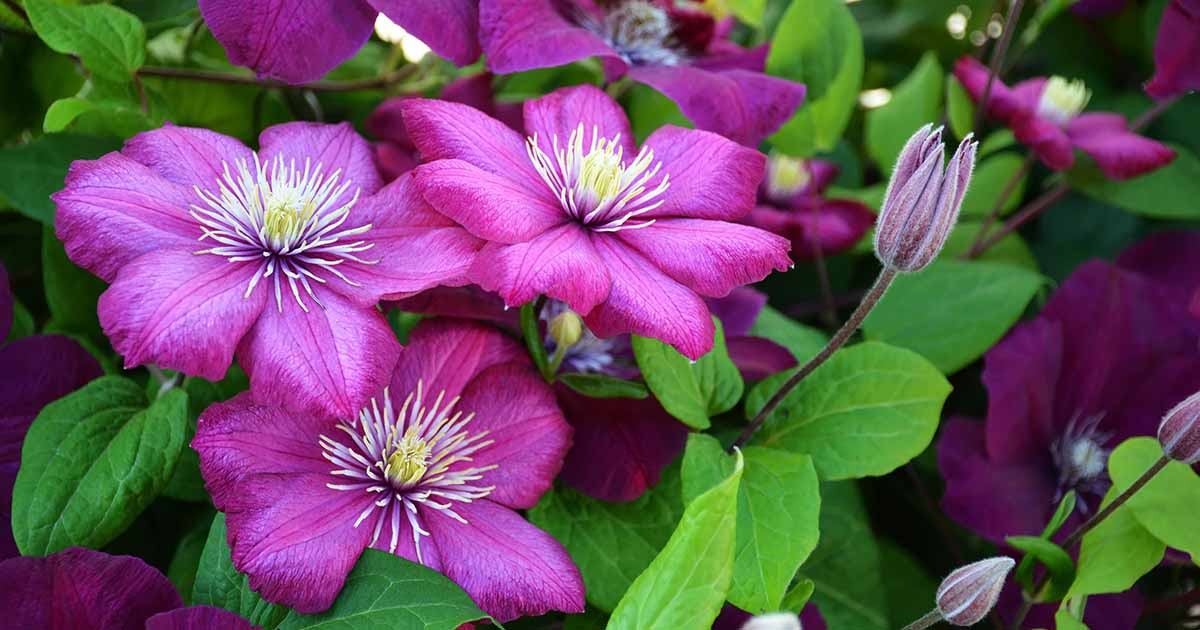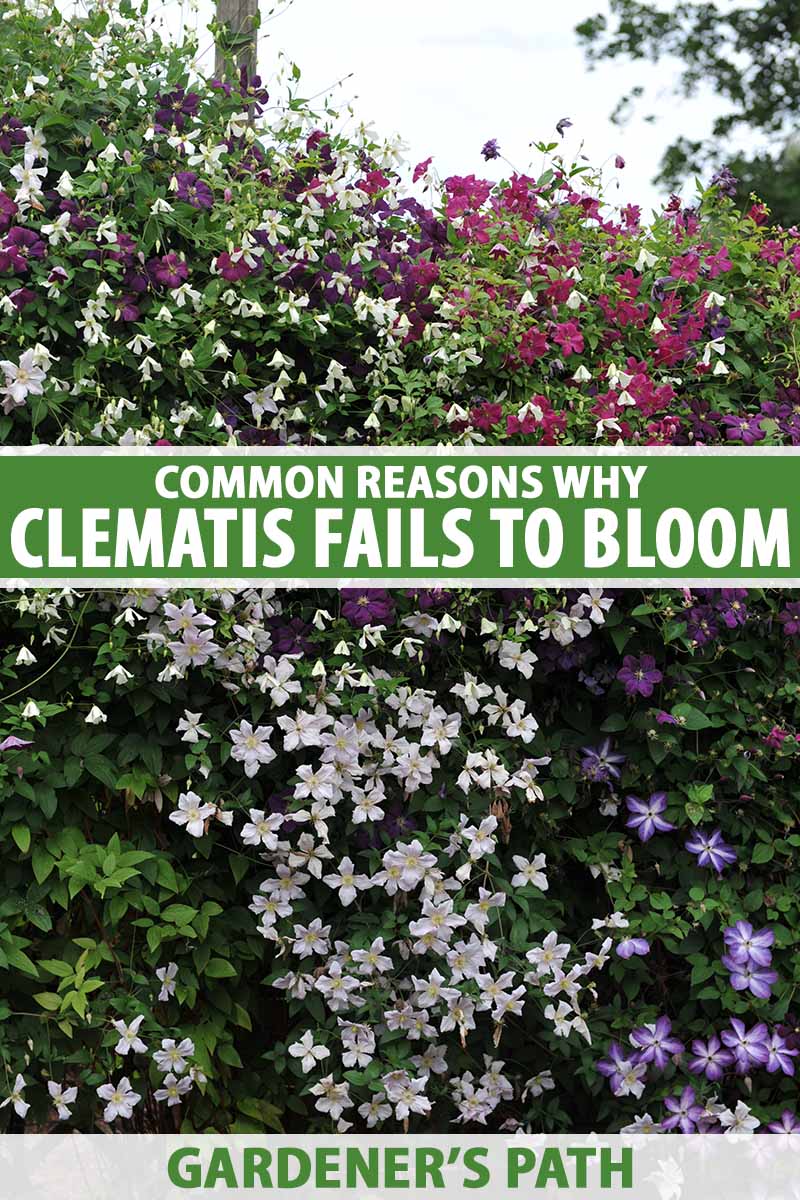Whether they’re deciduous or evergreen, winter or summer bloomers, have single or double flowers, there’s one thing we all want from our clematis plants: blossoms.
We’re not putting in all the work of planting and caring for those vines simply for the good of our health. We want a big, beautiful floral display!


We link to vendors to help you find relevant products. If you buy from one of our links, we may earn a commission.
Sometimes, our vines don’t produce the flowers we eagerly anticipate.
Whether it’s because we pruned at the wrong time or let the roots get a bit too toasty, there are a few issues that can cause your vines to flounder.
In this guide, we’ll examine five common reasons why a clematis vine may fail to bloom and what to do about them. Here’s what’s on the menu:
We’ll start with one of the causes that is fairly easy to diagnose. But before we jump into the topic of age, it helps to clarify a few terms.
There are three types of clematis, defined as Group I, II, and III.
- Group I clematis bloom early in the season on the previous year’s growth.
- Group II flower later than the first group on the previous year’s growth and new growth.
- Group III plants flower last on the current year’s growth.
It’s important to identify which type you have growing in your garden, especially when it comes to pruning, which we’ll cover a bit later.
1. Age
Young plants might not flower. If you recently purchased the plant and put it in the ground, it might need a few years to mature.
I find that Group III plants typically flower right away, even in the first year. But plants from Group I and II might need a few years to get going.


Don’t worry too much if a young plant isn’t performing just yet. If it’s in Group I or II, give it a few years before you start to worry.
Take care of it as discussed in our clematis growing guide, and your patience will pay off.
I will say that I did once purchase and plant a vine that never flowered. It was in the perfect spot, with shaded roots, and pruned appropriately, and it just never got around to producing blossoms. It is possible that a vine could be a dud, but that would be unusual.
If everything else looks good and it has been five years since you planted, it’s possible that you have a plant that will never flower, and you might need to consider replacing the plant.
2. Hot Roots
Clematis need cool roots. They need plenty of moisture and soil temperatures between 50 and 65°F or they won’t flower. The plants might be stunted, as well.
You can stick a thermometer in the soil on a warm day to see what the temperature actually is in the ground beside your vines.
If you don’t have a thermometer or access to one, stick your finger in the soil. If it doesn’t feel chilly, the soil is probably too warm.


A lot of gardeners use a layer of pebbles or rocks to keep the roots cool, but I find this can actually do the opposite in some cases.
Dark rocks absorb heat, as do small rocks. Rocks that are large and light-colored work best for this purpose.
You can also use mulch, but I find that it doesn’t retain cool temperatures as much as rocks or living ground covers do.
I prefer to grow shallow-rooted ground covers at the base of my vines.
I learned this trick from a clematis garden in Portland, Oregon and I’ve experimented in my own yard with good success.
Strawberries work well because they form a nice, dense mat and have shallow roots.
3. Pruning At the Wrong Time
Want to go down a rabbit hole? Have a few hours to waste? Dig into the world of clematis pruning. Along with hydrangeas, they’re some of the more confusing plants to prune.
There are three pruning groups: Group I (Type A), Group II (Type B), and Group III (Type C).
Those in the first category flower on the previous year’s growth. They shouldn’t be pruned much, if at all.
If you do prune, make sure to do it immediately after the first flush of blossoms and only trim a small amount.
Try to just remove dead, diseased, or damaged growth. If you have to prune heavily to provide shape, know that you won’t see blooms for at least another year.
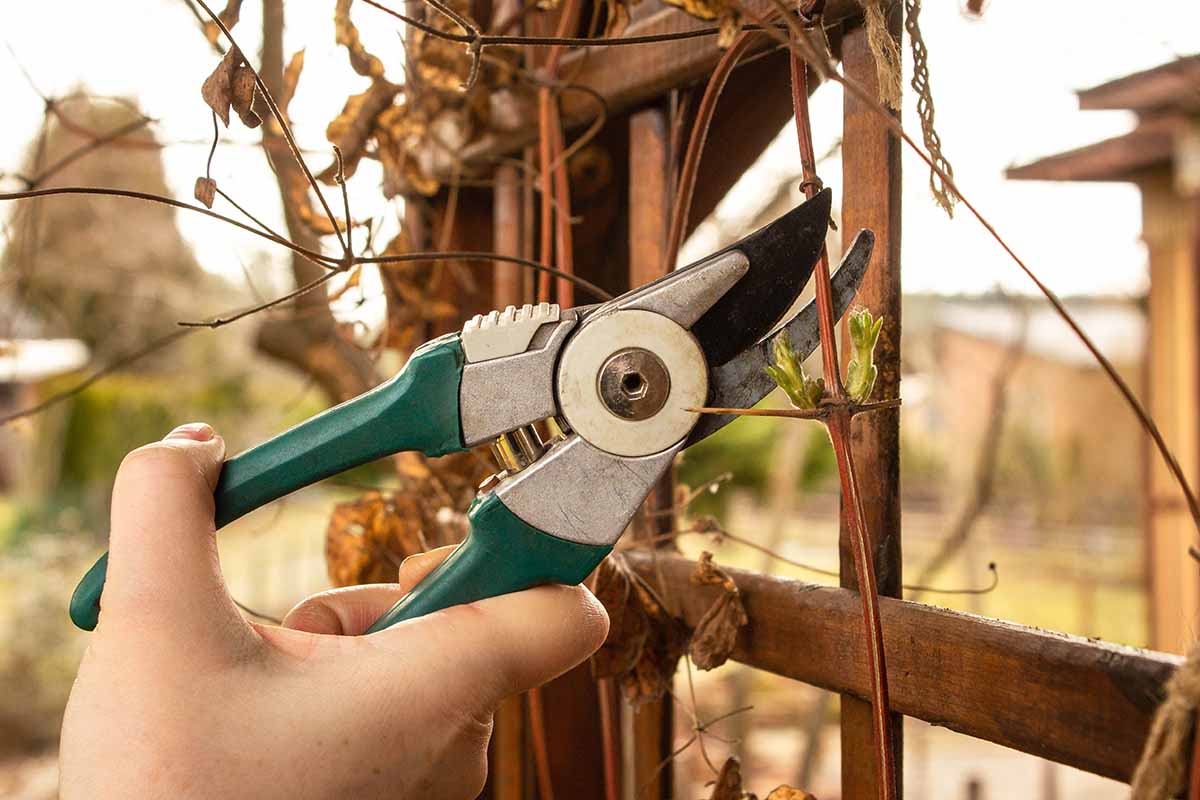

Group II clematis aren’t as sensitive to over-pruning as Type I, but still require cautious trimming.
They flower on both old and new growth, but the best flowering occurs on old wood. Newer growth can produce flowers, but they are usually fewer and smaller than those on older growth.
Wait for spring when new growth is developing. If you see branches without any new growth, remove them. You should also remove any diseased, damaged, or dead branches.
Prune lightly again after flowering. If you prune the plant aggressively to control its size, you will probably have few flowers the following year, but you should see some.
Vines in Group III are the ones you can go to town on. These bloom prolifically on new, current-year growth.
These are the vines you can prune back to just a few inches above the ground each spring and you’ll still be treated to heaps and heaps of flowers.
If you are growing a Group III clematis and it’s not producing flowers, it probably isn’t a pruning problem.
Visit our guide for a full run-down of how to prune clematis.
4. Too Much Shade
Because clematis plants need cool roots, some gardeners try to provide them with that by planting the vines in some shade.
But they really need full sun or at least partial sun to flower best, with just the roots shaded or otherwise protected.
If your plants aren’t receiving at least six hours of sunlight, it’s unlikely that they’ll bloom prolifically, if at all.
On a day when you can be at home, check every hour to see whether the plant is in the sun or not. You might be surprised to see that shade creeps in during the day.
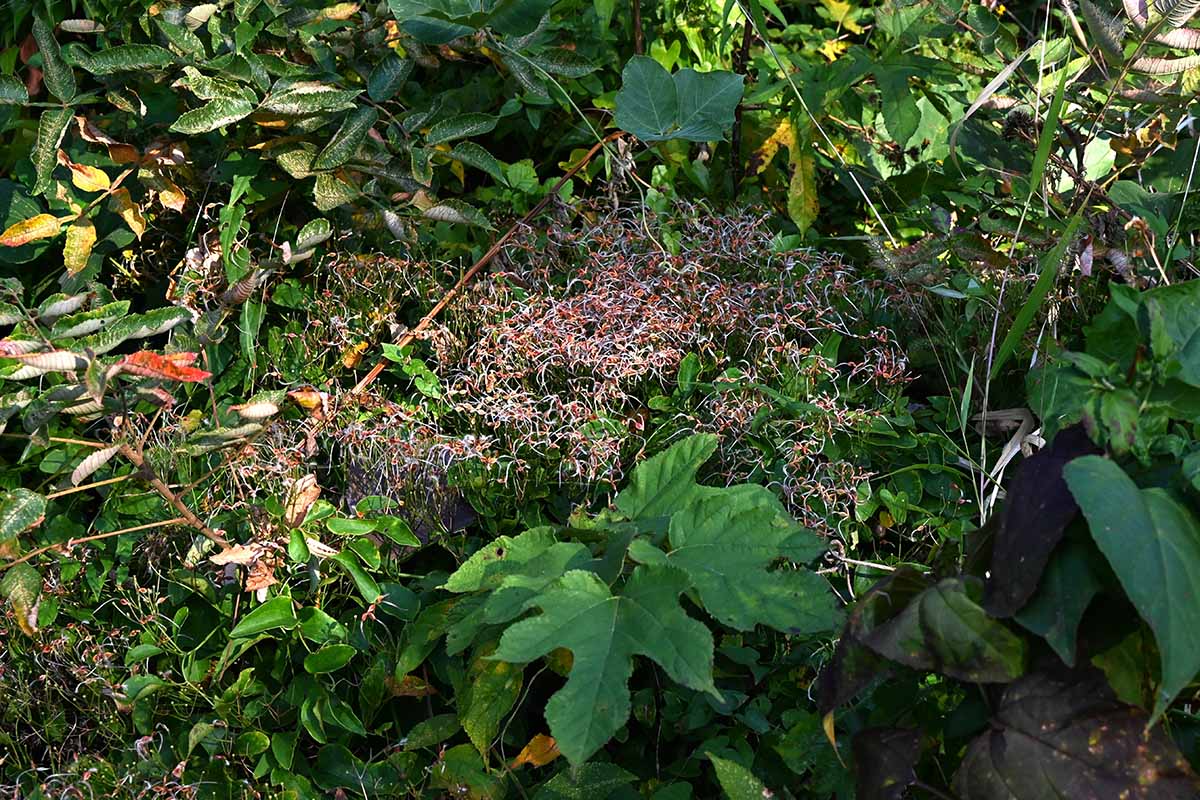

It happens in every garden. You plant something in full sun, and then the neighbor builds a new fence, a tree grows up, or an asteroid knocks the plant slightly off its axis – well, maybe not the latter! Now your plant is in more shade than you realized.
You can’t do much about asteroids or inconsiderate neighbors, but prune any trees or shrubs that you can to open up the area a bit more and provide your vine with more sun exposure.
If you can’t do that, you’ll need to transplant your clematis into a brighter spot.
5. Nutrition Problems
It takes a lot of energy to produce abundant flowers.
The blossoms are the plant’s method of reproduction and, as with humans, the act of attempting to reproduce is costly in terms of energy.
There are plenty of plants that don’t require regular feeding, but clematis isn’t one of them.
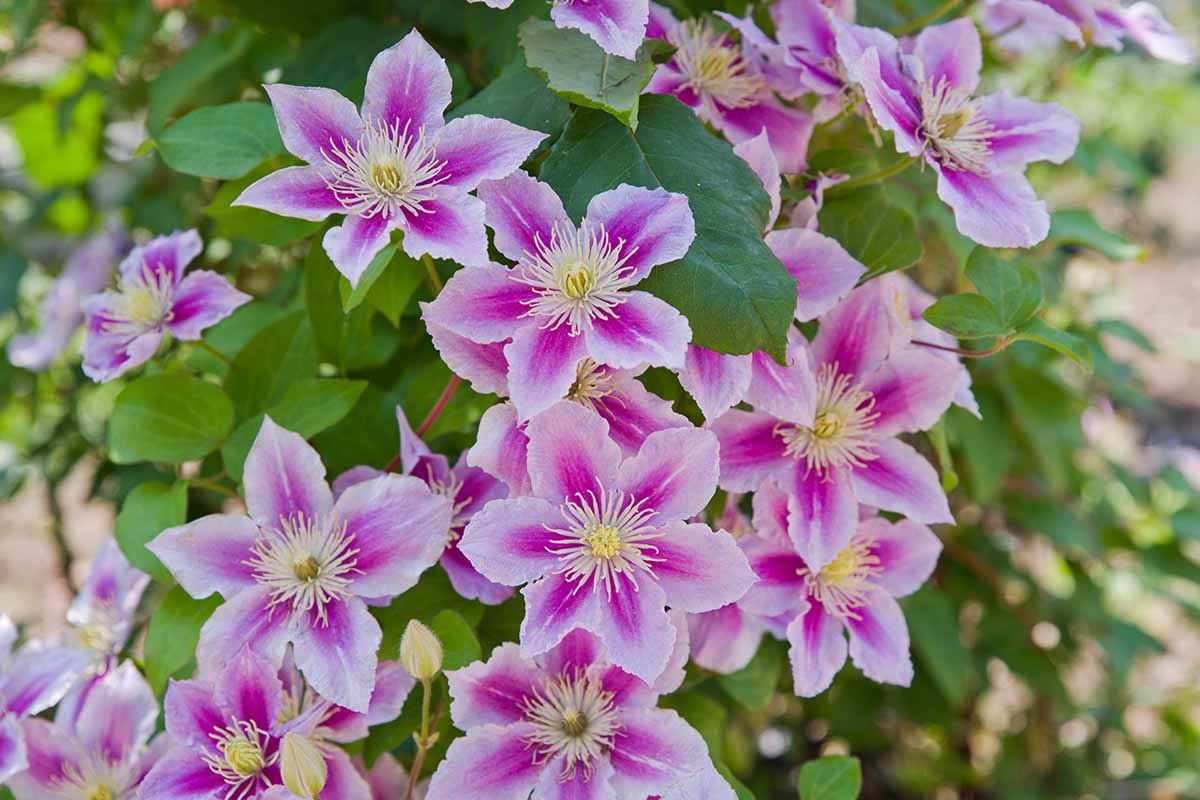

Before you plant anything in your garden, I firmly believe you should test your soil.
You’ll never know what’s going on with your soil until you test it, and the results will help you add amendments accordingly.
If you add a bunch of nitrogen and your soil is not deficient, you aren’t doing your wallet or your plants any favors.
Assuming your soil is average and not low in one specific nutrient, use a balanced fertilizer once a month starting and spring, until the flowers fade.
A fertilizer with an N-P-K of 10-10-10 is about right.


Southern Ag All Purpose Fertilizer
You can’t go wrong with Southern Ag’s all-purpose 10-10-10 fertilizer. It’s a classic option trusted by commercial and home growers alike. Pick up five-pound bags at Amazon.
It’s Flower Time
It’s true what they say: clematis is generally easy to raise and care for. It’s one of the reasons these vines are so popular.
But if your vine fails to bloom, don’t let that make you feel like a failure. Sometimes, things go wrong, even with the most unfussy plants. Chances are it’s one of the causes on this list and now you know how to resolve it!
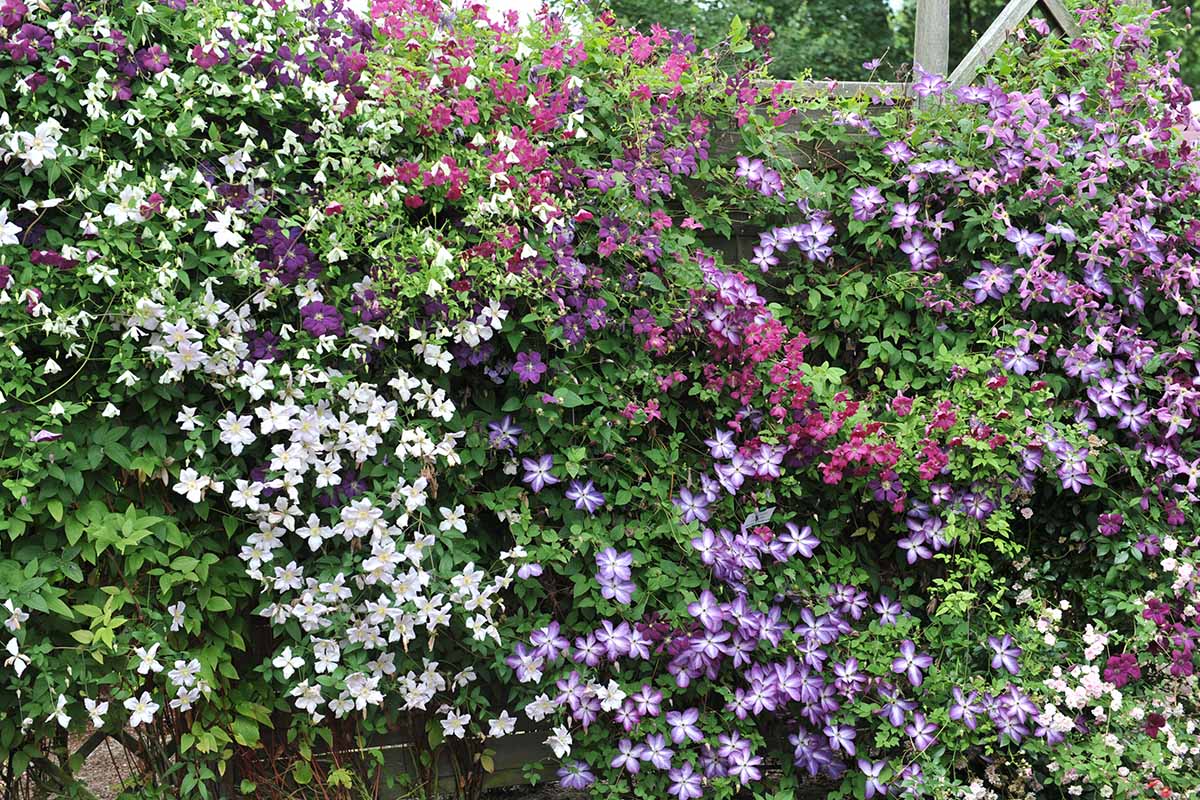

Is your clematis not blooming? Were you able to figure out the cause? I hope so, but if you’re still having trouble, feel free to leave us a comment and we’ll see what we can do to help.
There’s so much more to learn about the world of growing clematis and perhaps you’re interested in expanding your knowledge. If so, here are a few guides that you might want to check out:

